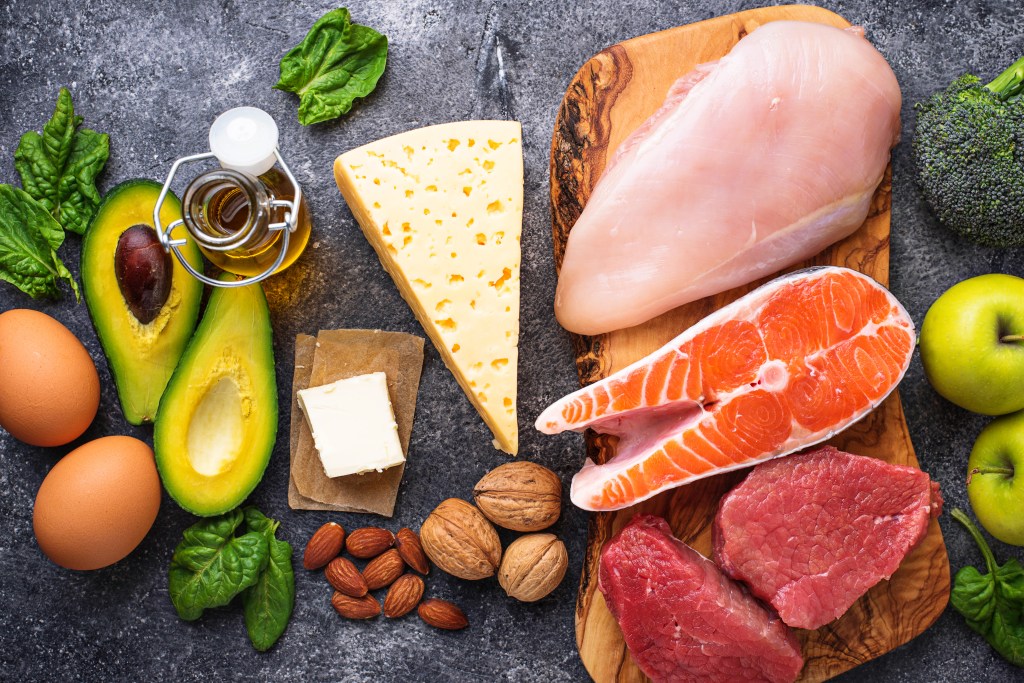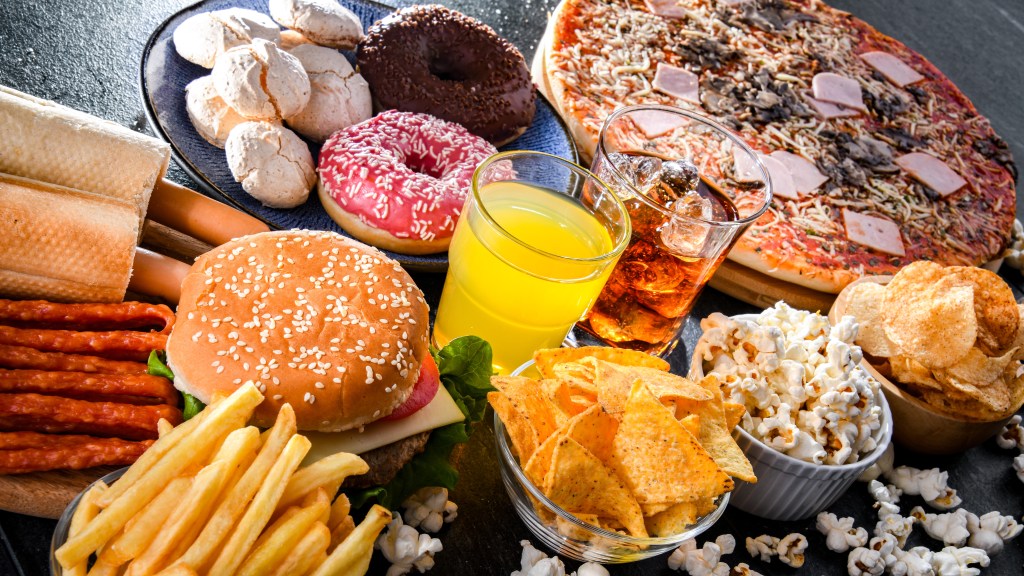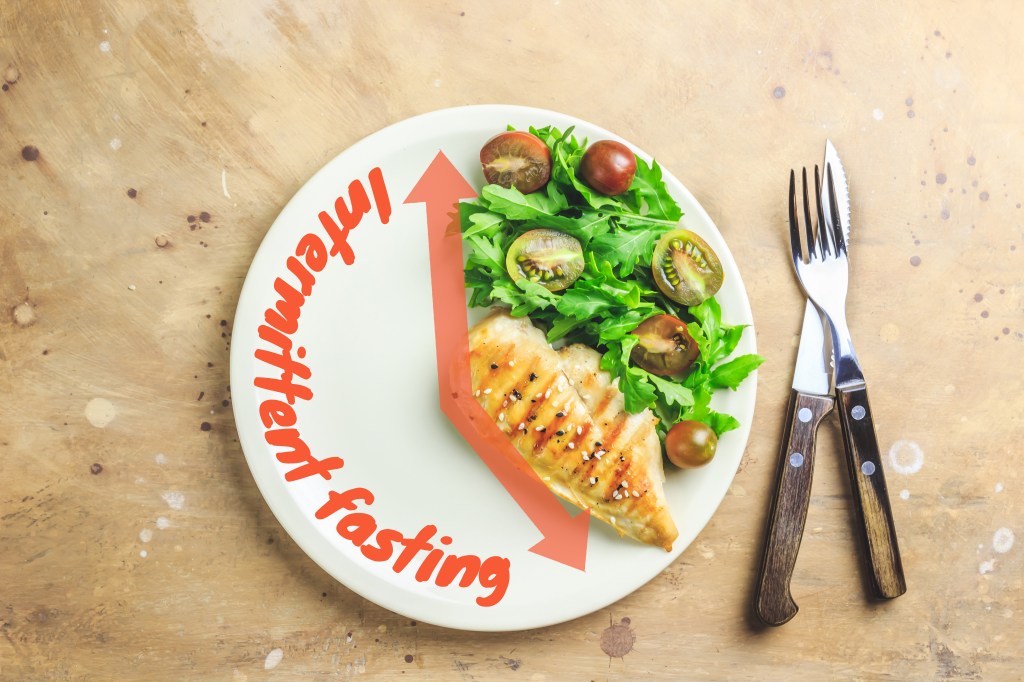At a glance
Inflammation is a silent driver of many serious health conditions, and factors such as a poor diet, stress, metabolic imbalances, sedentary behavior, and inadequate sleep are major contributors. Addressing the causes of inflammation through dietary changes, exercise, stress management, and quality sleep can help restore balance and protect long-term health.
While acute inflammation is the body’s natural response to trigger the healing process, unresolved and chronic inflammation is a key factor in the development of various diseases.
Let’s look at the top causes of inflammation and discover how adopting an anti-inflammatory diet can help restore balanced immune system functions and improve overall health and well-being.
What is inflammation?
Inflammation is a critical natural defense mechanism, triggered by the immune system in response to infections, injuries, or exposure to toxins.
When white blood cells, a group of immune cells, detect a perceived threat or injury, they trigger a cascade of physiological and biochemical processes involving various inflammatory cells and signaling molecules to protect the body and initiate healing.
Inflammation plays a crucial role in fighting off invaders and repairing tissue damage. However, uncontrolled inflammation can contribute to serious health problems such as autoimmune disorders and cardiovascular diseases.
Types of inflammation
Inflammation can broadly be categorized into acute and chronic inflammation.
Acute inflammation is a rapid immune response to injury or infection that helps the body heal by quickly activating inflammatory defense mechanisms.
Once the threat is neutralized or the damage is repaired, the inflammatory response subsides, and the body returns to a balanced state.
In contrast, chronic inflammation can last for months or even years and is usually not triggered by an obvious injury or infection. Instead of helping the body heal, it becomes a harmful, ongoing process.
The immune system continues releasing inflammatory cells, which can spread throughout the body and gradually damage tissues and organs, often without noticeable symptoms.
Research published in Nature Medicine highlights that chronic systemic inflammation disrupts normal cellular functions, which is strongly associated with a wide range of serious health conditions.1
Chronic inflammation can increase the risk of various diseases, including:
- Rheumatoid arthritis
- Psoriatic arthritis
- Diabetes
- Metabolic syndrome
- Heart disease
- High blood pressure
- Kidney disease and kidney failure
- Ulcerative colitis
- Crohn’s disease
- Inflammatory bowel disease (IBD)
- Alzheimer’s disease
- Psoriasis
- Cancer
- Asthma
- Depression
Watch the video below to discover the top ten causes of inflammation.
Symptoms of inflammation
The symptoms of acute inflammation include redness, swelling, heat, pain, and in some cases, loss of function of the affected joint or tissue. These symptoms typically develop rapidly and resolve once the underlying cause is eliminated.
Chronic inflammation, on the other hand, develops gradually and may persist with more subtle and widespread symptoms that can be hard to pinpoint to a specific cause.
Signs and symptoms of chronic inflammation include:
- Fatique
- Joint and body aches
- Stiffness
- Poor digestive functions
- Mood changes
- Skin problems
- Frequent infections
- Brain fog
- Metabolic disorders

Top causes of inflammation
While chronic inflammation can sometimes arise from a single specific cause, it’s often a combination of poor dietary and lifestyle habits that create an environment conducive to persistent inflammation.
Here are six common causes of inflammation.
1. Poor gut health
Food sensitivities, often triggered by gluten, lactose, or dairy, are common and can directly contribute to inflammation.
These sensitivities can irritate and disrupt the gut lining, contributing to a condition known as leaky gut or intestinal permeability. A leaky gut allows harmful substances to enter the bloodstream, which triggers constant immune responses and inflammation.
2. Ultra-processed foods
Ultra-processed foods (UPFs) are packed with synthetic additives, preservatives, and highly refined ingredients such as seed oils and modified starches that underwent heavy chemical processing.
The body doesn’t recognize these substances, triggering immune responses and inflammation to eliminate these compounds perceived as foreign.
In addition, UPFs have been found to increase the production of reactive oxygen species, a group of highly unstable metabolic by-products that cause oxidative stress, a major contributing factor to chronic inflammation.
3. Stress
A study published in Psychoneuroendocrinology highlights, “Stress systems communicate threats to the entire organism, and as such, also stimulate inflammatory mechanisms.”2
This suggests that stress is a crucial factor in the development and perpetuation of chronic diseases associated with persistent inflammation.

4. Metabolic imbalances
Poor metabolic health, including insulin resistance and excess fat accumulation in adipose tissue, can drive chronic inflammation.
Fat tissue, especially around the abdomen, is metabolically active and continuously releases adipokines, a group of signaling molecules that can promote persistent inflammatory responses.
“The link between excess body fat and inflammation likely explains why individuals who are overweight or obese have a higher risk of developing chronic inflammatory diseases compared to those with a healthy body weight,” explains Dr. Berg.
5. Sedentary lifestyle
According to evidence published in Sports Medicine and Health Science, lack of physical activity is a significant risk factor for chronic inflammation and associated health issues.3
Physical inactivity impairs the body’s ability to regulate inflammation, disrupts balanced immune functions, and contributes to weight gain, all contributing to ongoing inflammatory responses.
6. High intake of refined carbohydrates and sugars
Consuming refined carbohydrates and added sugars, such as those found in white bread, pastries, sugary drinks, and processed foods, can lead to fluctuating blood sugar and insulin levels.
This dietary pattern increases the risk of insulin resistance and body fat accumulation, creating a pro-inflammatory environment within the body.

The best anti-inflammatory foods
Certain foods are rich in nutrients and bioactive compounds that support the body’s natural ability to reduce inflammation and promote healing.
Here are some of the best anti-inflammatory foods.
1. Oily fish
Fatty fish such as salmon, mackerel, sardines, and anchovies are rich sources of omega-3 fatty acids, a group of health-promoting fats with potent anti-inflammatory properties.
Omega-3 fatty acids help modulate and balance the immune system’s response by downregulating the production of pro-inflammatory immune cells, which is crucial to resolving chronic inflammation.
2. Cruciferous and green leafy vegetables
Vegetables such as broccoli, kale, Brussels sprouts, spinach, and arugula are packed with antioxidants, fiber, and bioactive compounds like sulforaphane that help reduce inflammatory markers.
These nutrient-dense vegetables also support detoxification processes and gut health, both of which are key to controlling inflammation.
3. Healthy fats
Healthy fats such as olive oil, avocados, ghee, tallow, and coconut oil provide beneficial monounsaturated and medium-chain fats that help dampen inflammation.
Extra virgin olive oil is particularly beneficial as it contains potent polyphenols with powerful anti-inflammatory effects that have been shown to help combat oxidative stress and associated tissue damage.

4. High-quality protein
Grass-fed beef, organic pork, pasture-raised eggs, and wild-caught game meat and seafood provide high-quality protein.
Consuming these foods can help build and repair tissues while supporting steady blood sugar levels, an important factor for reducing inflammation.
These foods also offer essential amino acids needed to regulate detoxification and immune function, both crucial aspects of managing chronic inflammation.
5. Herbs and spices
Anti-inflammatory herbs and spices such as turmeric, ginger, garlic, rosemary, and cinnamon contain powerful bioactive compounds that modulate immune activity and reduce pro-inflammatory signaling.
6. Nuts and seeds
Nuts and seeds like walnuts, chia seeds, flaxseeds, and almonds provide healthy fats, vitamin E, magnesium, and fiber, all of which play roles in supporting balanced immune system responses.
Flax and chia seeds are rich sources of omega-3 fatty acids that support brain and cardiovascular health while enhancing the body’s capacity to fight oxidative stress and inflammation at a cellular level.

Inflammatory foods to avoid
A diet high in processed and fried foods, especially those containing trans fats or refined seed oils, has been directly linked to an increased risk of chronic inflammatory diseases.
In addition, it’s vital to avoid these foods and beverages that promote inflammation.
1. Refined carbs and added sugars
Refined carbohydrates and added sugars are linked to poor metabolic health and weight gain, two primary drivers of chronic low-grade inflammation.
2. Alcohol
Excessive alcohol intake contributes to a leaky gut and disrupts the balance of beneficial gut bacteria, which contributes to dysregulated immune responses and chronic inflammation.
3. Oxalate and pythate-rich foods
Oxalate-rich foods, such as yams, baked potatoes, and navy beans, as well as those high in phytates, like whole grains and legumes, can interfere with mineral absorption.
In addition, oxalates and phytates can irritate the gut lining and contribute to intestinal inflammation, particularly in individuals with poor digestive health.
4. Artificial sweeteners
Certain artificial sweeteners, including aspartame and saccharin, have been shown to alter gut microbiota composition, linked to imbalanced and overt inflammatory responses.
5. Exposure to trigger foods
Unidentified food sensitivities or intolerances can significantly disrupt gut health and contribute to systemic inflammation.
If you suspect a food sensitivity, it’s recommended to keep a detailed food diary or undergo an elimination diet to help identify potential trigger foods.

Natural remedies for inflammation
In addition to avoiding pro-inflammatory foods and emphasizing those that support balanced immune responses, adopting healthy dietary and lifestyle habits can significantly reduce chronic inflammation and promote overall wellness.
Here are five natural remedies for managing and preventing inflammation.
1. Follow Healthy Keto®
Healthy Keto® is an ideal dietary pattern to support balanced immune responses as it limits pro-inflammatory carbs and sugars, processed foods, and harmful seed oils.
In addition, this advanced version of the ketogenic diet emphasizes anti-inflammatory foods such as grass-fed beef, pasture-raised eggs, organic dairy, non-starchy vegetables, and healthy fats.
Interestingly, research published in Food Science & Nutrition found that a well-formulated ketogenic diet is an excellent strategy for reducing the risk of metabolic diseases, which in turn lowers the risk of chronic inflammatory disorders.4
2. Incorporate intermittent and prolonged fasting
Intermittent and prolonged fasting routines are powerful tools for promoting a healthy weight, supporting a diverse microbiota, and improving gut health, thereby helping reduce chronic inflammation.
Prolonged fasting also triggers cellular repair processes, including autophagy, which removes damaged and dysfunctional cells, vital for maintaining a balanced inflammatory process.

3. Practice stress reduction
Because chronic stress is closely linked to inflammation, regularly engaging in relaxing activities such as deep breathing, spending time in nature or with loved ones, and gentle exercise can reduce inflammatory markers and enhance overall well-being.
4. Engage in regular exercise
A study published in the American Journal of Lifestyle Medicine suggests that regular physical activity not only lowers inflammatory markers but also addresses key drivers of inflammation, including excess weight and poor metabolic function.5
Moderate and gentle exercises, such as walking, swimming, hiking, and cycling, can consistently provide significant anti-inflammatory benefits without placing excessive stress on the body.
5. Prioritize restful sleep
Chronic sleep deprivation disrupts immune regulation and increases the production of pro-inflammatory cytokines, contributing to systemic inflammation.
Practicing good sleep hygiene and prioritizing seven to eight hours of high-quality sleep each night supports the body’s natural repair processes and helps regulate inflammatory pathways.

When to talk to your doctor
If you have developed symptoms of persistent and unresolved inflammation or are concerned about your immune system, it’s crucial to consult a medical provider for a thorough health evaluation.
Various blood tests can help assess immune cell activity and inflammatory markers, providing a comprehensive picture of your health.
Left unaddressed, even low-grade chronic inflammation can gradually damage tissues and organs, increasing the risk of serious health issues, including cardiovascular conditions, diabetes, autoimmune disorders, and neurodegenerative diseases.
Key takeaways
- Persistent and unresolved inflammation is a key factor in chronic diseases such as diabetes, heart disease, autoimmune disorders, and neurodegenerative conditions.
- Top causes of inflammation include poor gut health, ultra-processed foods, stress, metabolic imbalances, sedentary lifestyle, and a high intake of refined sugars and carbs.
- Anti-inflammatory foods such as oily fish, leafy green vegetables, healthy fats, herbs, nuts, and high-quality protein help reduce inflammation naturally.
- Natural strategies to manage inflammation include following an anti-inflammatory Healthy Keto diet, intermittent fasting, and stress reduction.
- Regular exercise and prioritizing restorative sleep further support the body’s ability to resolve inflammation and maintain robust immune defenses.
FAQ
What are the causes of inflammation in the body?
While injury or infection triggers acute inflammation, chronic inflammation is often driven by factors such as stress, lack of exercise, poor gut health, metabolic imbalances, and excess body weight. In addition, unidentified food sensitivities and poor dietary habits, such as frequent consumption of ultra-processed foods (UPFs), refined carbohydrates, added sugars, and alcohol, can also promote ongoing inflammation.
What are the signs of inflammation?
Signs and symptoms of chronic and unresolved inflammation include fatigue, joint or muscle pain, digestive issues, brain fog, skin problems, and frequent infections. In contrast, symptoms of acute inflammation include pain, swelling, redness, and heat, which typically resolve once the underlying issue is addressed.
What does inflammation feel like?
Chronic inflammation can cause a variety of vague yet persistent symptoms, including fatigue, low energy, brain fog, and general achiness. You may also feel run-down, have trouble concentrating, or experience ongoing digestive issues.
Can I reduce inflammation in my body quickly?
Avoiding UPFs, alcohol, refined carbohydrates, and sugars while prioritizing fatty fish, healthy fats, leafy green and cruciferous vegetables, seeds, and nuts can support the body’s ability to reduce inflammation. In addition, combining Healthy Keto® with intermittent fasting and maintaining healthy sleep and stress management enhances immune balance, which can help reduce inflammation quickly.
What is the strongest natural anti-inflammatory?
Curcumin, the bioactive compound in turmeric, is widely regarded as one of the strongest natural anti-inflammatory agents due to its ability to inhibit multiple inflammatory pathways while suppressing the production of pro-inflammatory messengers.
Sources
https://pmc.ncbi.nlm.nih.gov/articles/PMC7147972/
https://www.sciencedirect.com/science/article/abs/pii/S0306453018306954
https://www.sciencedirect.com/science/article/pii/S2666337620300081
https://pmc.ncbi.nlm.nih.gov/articles/PMC10916642/
https://journals.sagepub.com/doi/10.1177/1559827607300283








